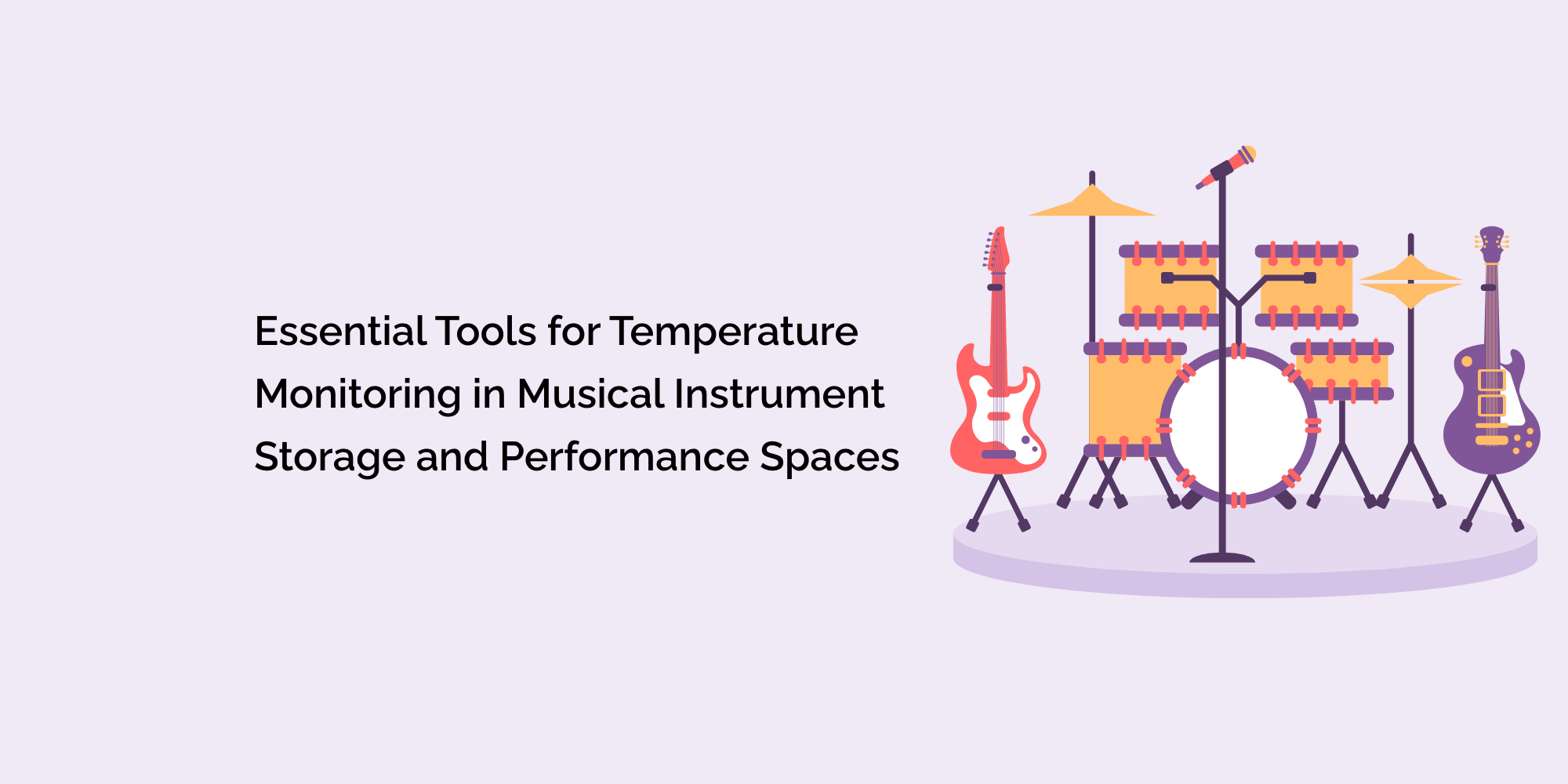Temperature monitoring plays a crucial role in maintaining the optimal conditions for musical instruments during storage and in performance spaces. Temperature fluctuations can significantly impact the structure, tonal quality, and overall lifespan of devices. To ensure the longevity and optimal performance of these valuable assets, it is essential to implement effective temperature monitoring systems. This comprehensive blog will explore the necessary tools and technologies for temperature monitoring in musical instrument storage and performance spaces. We will discuss traditional and advanced monitoring devices, their features and benefits, and best practices for accurate temperature readings. By utilizing these tools, musicians, and caretakers can protect their instruments and create a stable environment for their storage and performances.
The Importance of Temperature Monitoring in Musical Instrument Care
Temperature monitoring is critical in ensuring optimal conditions for musical instruments. Temperature fluctuations can lead to structural damage, tonal changes, and other issues that compromise the instrument's performance and lifespan. By actively monitoring temperature levels, musicians and caretakers can take preventive measures and maintain stable device conditions.
Traditional Tools for Temperature Monitoring
Traditional temperature monitoring tools, such as thermometers and hygrometers, have long been used to measure temperature and humidity levels. They offer basic functionality and can help obtain general readings. However, these tools may need improved accuracy, data logging, and remote access.
Advanced Temperature Monitoring Devices
Advanced temperature monitoring devices provide more accurate and comprehensive monitoring capabilities. Digital temperature sensors offer precise temperature readings, real-time monitoring, and compact design. Data loggers enable tracking temperature trends over time and provide remote access to stored data. Wireless monitoring systems offer continuous real-time monitoring, cloud-based data storage, and scalability for large-scale applications.
Features and Benefits of Digital Temperature Sensors
Digital temperature sensors provide accurate and real-time temperature readings. They are compact and easy to install in various locations. Additionally, they often offer data logging and analysis capabilities, allowing musicians and caretakers to track temperature trends and identify patterns.
Data Loggers for Comprehensive Temperature Monitoring
Data loggers are valuable tools for comprehensive temperature monitoring. They can record temperature data over time, providing insights into temperature fluctuations and trends. Remote access and data analysis capabilities make data loggers convenient for instrument caretakers who need to monitor temperature conditions over extended periods.
Wireless Monitoring Systems for Real-Time Tracking
Wireless monitoring systems offer continuous real-time temperature tracking and alerts. These systems use sensors placed strategically in instrument storage and performance spaces, transmitting data to a central hub. With cloud-based data storage and access, musicians and caretakers can monitor temperature conditions from anywhere and receive notifications in the event of temperature deviations.
Best Practices for Accurate Temperature Readings
To ensure accurate temperature readings, it is essential to place temperature sensors in appropriate locations. Detectors should be positioned away from direct sunlight, heat sources, or drafts that could affect the accuracy of the readings. Regular calibration and maintenance of monitoring devices are also crucial for accurate and reliable temperature measurements.
Integrating Temperature Monitoring with HVAC Systems
Integrating temperature monitoring with HVAC systems allows precise temperature control in instrument storage and performance spaces. Smart thermostats and climate control integration enable automation and remote temperature control, ensuring consistent and stable temperature conditions for instrument preservation.
Enhancing Instrument Care with Environmental Monitoring
Temperature monitoring is often complemented by monitoring other environmental factors that affect instrument health, such as humidity levels and light exposure. Monitoring and controlling humidity help prevent issues like wood swelling or cracking. Protecting instruments from excessive light and UV exposure helps preserve their finishes and to avoid discoloration.
Selecting the Right Temperature Monitoring Solution
When choosing a temperature monitoring solution, assessing specific needs and requirements is essential. Factors to consider include:
- The instrument storage or performance space size.
- The number of instruments to monitor.
- The desired level of data analysis and remote access.
Budget considerations and scalability should also be taken into account.
Certainly! Here are some frequently asked questions (FAQs) about temperature monitoring in musical instrument storage and performance spaces:
How do digital temperature sensors work?
Digital temperature sensors use electronic components to measure and display temperature readings. They provide accurate and real-time temperature data, often with additional features such as data logging and analysis capabilities. Digital temperature sensors can be easily installed in different locations and precisely monitor instrument storage and performance spaces.
What are data loggers, and how do they enhance temperature monitoring?
Data loggers are devices that record and store temperature data over time. They enable comprehensive temperature monitoring by tracking trends, fluctuations, and patterns. Data loggers often provide remote access to stored data, allowing musicians and caretakers to analyze temperature conditions and make informed decisions regarding instrument care.
Conclusion
Temperature monitoring is essential for maintaining the optimal conditions for musical instruments in storage and performance spaces. By utilizing the right tools, such as digital temperature sensors, data loggers, and wireless monitoring systems, musicians and caretakers can accurately monitor temperature levels, detect fluctuations, and take proactive measures to protect their instruments. Integrating temperature monitoring with HVAC systems and environmental monitoring further enhances instrument care. By investing in temperature monitoring solutions and adopting best practices for accurate readings, musicians can create a stable environment that prolongs the lifespan of their instruments, ensures consistent performance, and preserves their value for years to come.








